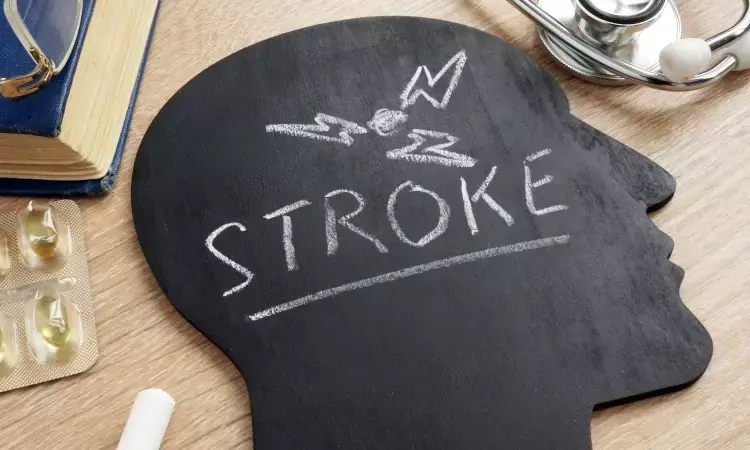- Home
- Medical news & Guidelines
- Anesthesiology
- Cardiology and CTVS
- Critical Care
- Dentistry
- Dermatology
- Diabetes and Endocrinology
- ENT
- Gastroenterology
- Medicine
- Nephrology
- Neurology
- Obstretics-Gynaecology
- Oncology
- Ophthalmology
- Orthopaedics
- Pediatrics-Neonatology
- Psychiatry
- Pulmonology
- Radiology
- Surgery
- Urology
- Laboratory Medicine
- Diet
- Nursing
- Paramedical
- Physiotherapy
- Health news
- Fact Check
- Bone Health Fact Check
- Brain Health Fact Check
- Cancer Related Fact Check
- Child Care Fact Check
- Dental and oral health fact check
- Diabetes and metabolic health fact check
- Diet and Nutrition Fact Check
- Eye and ENT Care Fact Check
- Fitness fact check
- Gut health fact check
- Heart health fact check
- Kidney health fact check
- Medical education fact check
- Men's health fact check
- Respiratory fact check
- Skin and hair care fact check
- Vaccine and Immunization fact check
- Women's health fact check
- AYUSH
- State News
- Andaman and Nicobar Islands
- Andhra Pradesh
- Arunachal Pradesh
- Assam
- Bihar
- Chandigarh
- Chattisgarh
- Dadra and Nagar Haveli
- Daman and Diu
- Delhi
- Goa
- Gujarat
- Haryana
- Himachal Pradesh
- Jammu & Kashmir
- Jharkhand
- Karnataka
- Kerala
- Ladakh
- Lakshadweep
- Madhya Pradesh
- Maharashtra
- Manipur
- Meghalaya
- Mizoram
- Nagaland
- Odisha
- Puducherry
- Punjab
- Rajasthan
- Sikkim
- Tamil Nadu
- Telangana
- Tripura
- Uttar Pradesh
- Uttrakhand
- West Bengal
- Medical Education
- Industry
Hemorrhagic strokes due to trauma on the rise especially among elderly men

Subarachnoid hemorrhage is when bleeding occurs in the space between the brain and the membrane that covers it. This type of stroke can be caused by a rupture of an aneurysm, high blood pressure or trauma.
Researchers have found in a new study that Hemorrhagic strokes due to trauma are on the rise especially among elderly men. Further Black people are at a disproportionately higher rate compared to people of other races and ethnicities.
The study has been published in the October 26, 2022, online issue of journal Neurology®.
"Subarachnoid hemorrhages unrelated to trauma account for 5% to 10% of all strokes in the United States, and are often deadly," said study author Fadar Oliver Otite, M.D., Sc.M., of the SUNY Upstate Medical University in Syracuse, N.Y. "Not only did we find an increase in these strokes over recent years, we also found the incidence was disproportionally higher and increasing in Black people while rates did not increase in people of other races and ethnicities."
For the study, researchers reviewed state hospitalization databases for New York and Florida and identified 39,475 people hospitalized for non-traumatic subarachnoid hemorrhage between 2007 and 2017. Using Census data, they then calculated the annual rates of this type of stroke in those states and compared those rates over time for men, women, various age ranges, races and ethnicities.
Researchers found that over the 10-year study, the average incidence of this type of stroke for all participants was 11 cases per 100,000 people. Rates were higher in women with 13 cases per 100,000 people, and lower in men with 10 cases. Incidence also increased with age. For middle-aged men, the average was four cases per 100,000 people while for men 65 and older, the average was 22 cases. Incidence increased over time, by 0.7% on average per year overall, with most of the increase in middle-aged men at 1.1%, older men at 2.3% and older women at 0.7%, while the incidence in young women declined by 0.7%.
When looking at race and ethnicity, researchers found incidence was greater in Black people with an average of 15 cases per 100,000 people compared to non-Hispanic white people with an average of 10 cases.
Incidence increased in Black people by 1.8% per year while rates for Hispanic, Asian and non-Hispanic white people did not change over time.
"The incidence of this type of stroke is disproportionately higher, and increasing, in Black people, leading to a widening of the racial incidence gap," said Otite. "Previous studies have found Black people develop high blood pressure younger and are more likely to have uncontrolled high blood pressure than non-Hispanic white people, so expanding efforts to control blood pressure may help reduce rates. The causes also likely extend to socioeconomic factors including structural racism. Tackling racial disparities will require multifaceted interventions targeted at stroke risk factors and socioeconomic inequity."
A limitation of the study was researchers were unable to differentiate between strokes caused by aneurysms and those not caused by aneurysms, which would have provided further insight.
Dr Kamal Kant Kohli-MBBS, DTCD- a chest specialist with more than 30 years of practice and a flair for writing clinical articles, Dr Kamal Kant Kohli joined Medical Dialogues as a Chief Editor of Medical News. Besides writing articles, as an editor, he proofreads and verifies all the medical content published on Medical Dialogues including those coming from journals, studies,medical conferences,guidelines etc. Email: drkohli@medicaldialogues.in. Contact no. 011-43720751


